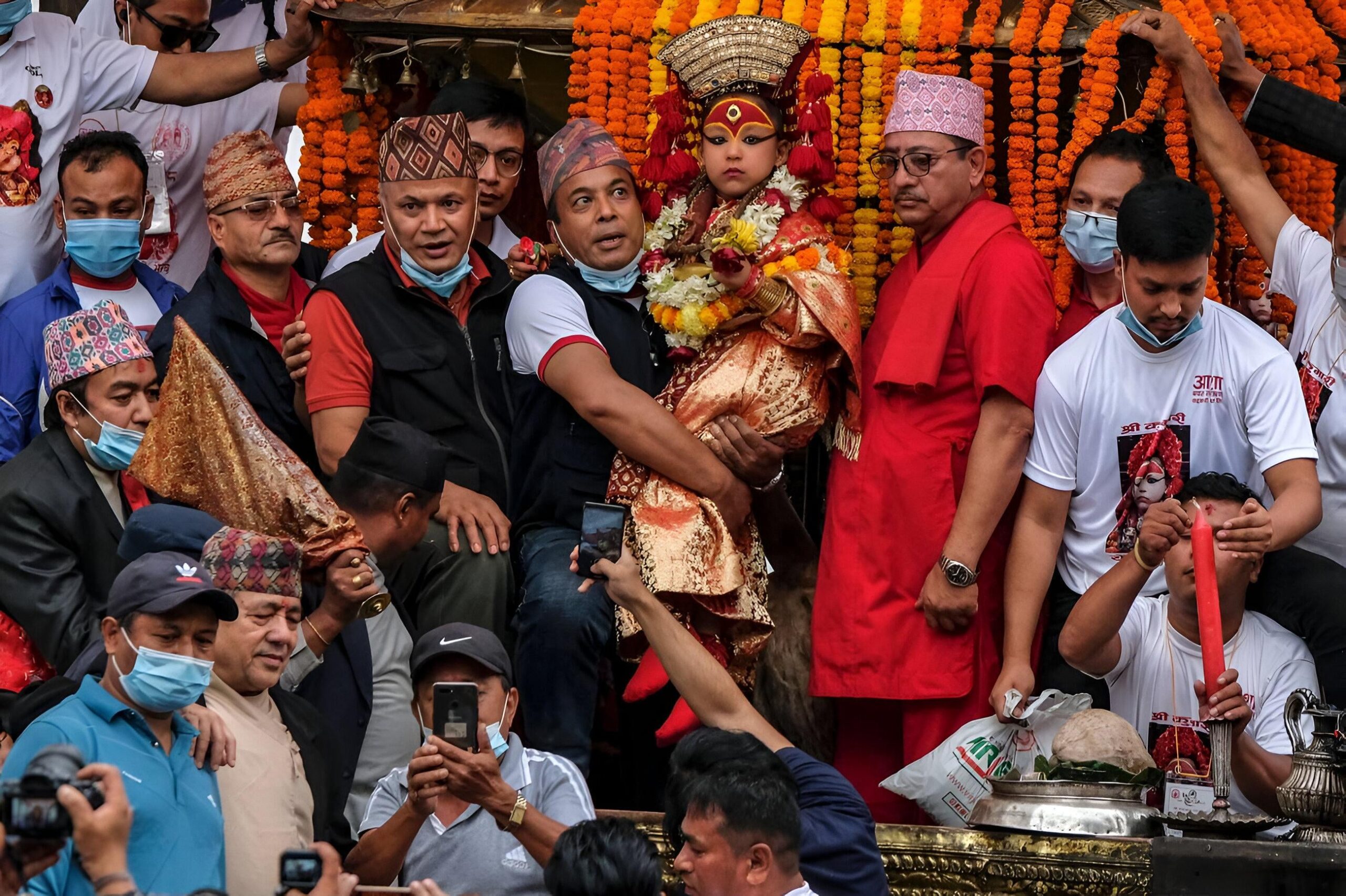Amid the bustling streets of Kathmandu, Nepal, resides a child who is worshipped as a living goddess — the Kumari, or “Virgin Goddess”. Chosen in childhood through an ancient and secretive process, she is believed to be the earthly embodiment of Taleju, a wrathful manifestation of Durga. Captured in a rare public appearance, the Kumari is carried by attendants, never allowed to touch the ground, as crowds gather in awe, reverence, and devotion.
The Kumari, a young prepubescent girl from the Shakya or Bajracharya clan of the Newar Buddhist community, once chosen, is enthroned as a living goddess, residing in the ornate Kumari Ghar (palace) in Kathmandu Durbar Square. Hindus and Buddhists alike worship her, including the King, who once bowed before her during the Indra Jatra festival.
The selection of the Kumari is based on 32 auspicious physical signs, astrology, and an intense fearlessness test, where candidates are exposed to scenes of sacrifice and masked dancers to test their calmness, believed to prove divine spirit. Once chosen, the girl assumes the role until she bleeds — either through menstruation or injury — marking the goddess’s departure from her body.
During her reign, the Kumari rarely speaks, always appearing serene and expressionless. She is carried everywhere, even within her palace. People seek her blessings and predictions, interpreting her slightest facial movement as an omen. She appears publicly only during major festivals, especially Indra Jatra, when she is paraded in a chariot across Kathmandu.
The Kumari’s life is a blend of power and isolation, revered as divine yet living a life of isolation and responsibility. Former Kumaris often speak about the challenges of reintegration into society after “retirement,” having lived in divine seclusion for years. Nevertheless, for the Nepalese, she is a potent symbol of female divinity, continuity of ancient culture, and the sacred presence of the goddess on Earth.
The Kumari tradition can be witnessed at the Kumari Ghar in Kathmandu Durbar Square, Nepal, and is also practiced in smaller forms in Patan and Bhaktapur. Visitors can witness her ceremonial appearances during Indra Jatra (September) or Dashain.
This living goddess tradition is one of the only ones in the world, offering a unique blend of Hindu and Buddhist spirituality. It raises deep questions about divinity, gender, power, and tradition. The thought of kneeling before a child believed to be divine challenges ideas of spirituality and modernity, prompting discussions about the intersection of tradition and contemporary beliefs.
Have you seen the Kumari in person or learned about her before? Share your thoughts and experiences.









Leave feedback about this